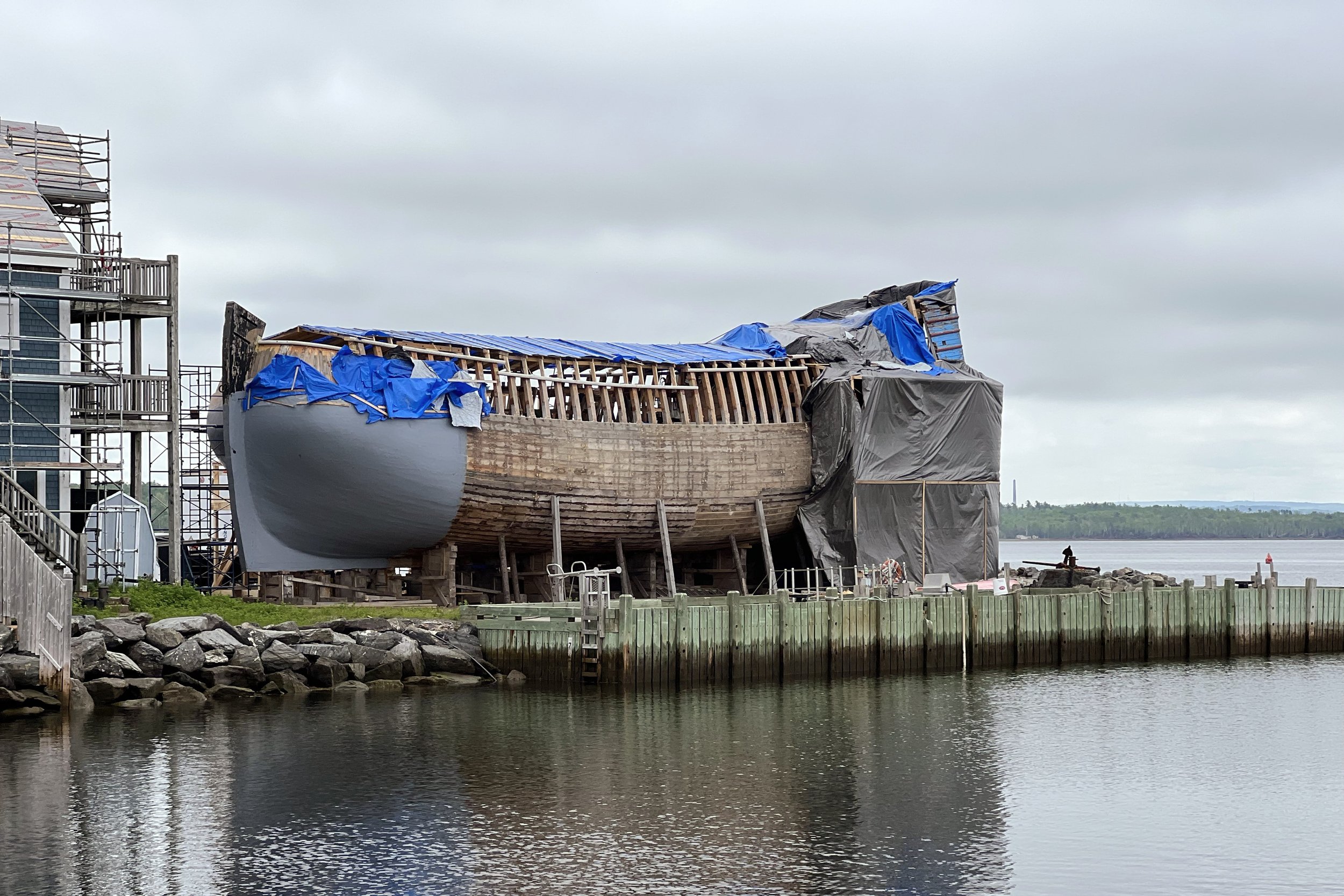Charlottetown to Baddeck, Friday, 16-Jun-2023
/It was time to go back to Nova Scotia, this time to Cape Breton Island. We first took the ferry, then drove a couple of hours to the middle of the island to go through the Alexander Graham Bell National Historic Site.
Leaving Prince Edward Island
Unlike crossing the Bay of Fundy, we had several choices of sailing times to cross the Gulf of St. Lawrence. We wanted to get the 10am one, which would give us time to get to Baddeck and do some things without feeling rushed or getting up too early.
Breakfast at the hostel was about to start as we were leaving, so as we got our food from the kitchen, we said goodbye to the owner. She offered us some of the banana bread she made the day before, and who were we to turn her down?
The boarding experience in Wood Islands was very different than in Digby with the other ferry. Instead of having to park and get our tickets inside, we were able to do everything at a booth while driving into the terminal. Then instead of lining up in several lines facing the ferry, we were instructed to drive past the boarding ramp, make a U-turn, then park in lanes facing the other direction. A few more lanes filled up, then the longer lanes facing the dock were used. Of course, big trucks had their own lanes facing the dock.
While we were waiting to board the ferry, we ate some of the breakfast items we had gotten the day before. As we ate, we looked out at all the fog (the whole drive to the terminal was foggy, too) and weren't too surprised when the ferry was a bit late. It did arrive and started offloading.
It wasn't too long before cars started boarding, but cars were still driving off. As we were driving on, we went up a ramp on one side, while cars were driving from the deck below, up a ramp. Above them was a ramp that was lifted up, and presumably would be lowered after the lower deck was filled with cars so the middle deck could be filled. When we parked, we were told to wait in the car until the ramp went up. Sure enough, we felt ourselves start to level out, and when all was said and done, we were at the same level as the hatch to go to the seating area.
We went to the upper deck and found a table next to a front window. We pulled out of Woods Island Harbour, went past Wood Islands Lighthouse, and were quickly in open water. As we sat there, we finished our breakfast and connected to the Wi-Fi on the ship.
After arriving in Caribou, Nova Scotia (having gone past the Caribou Lighthouse) we went to the car and eventually drove off the ferry. That's another different thing; this ferry was double-ended, like the ones in Puget Sound. The ferry across the Bay of Fundy had cars drive on and off the same end, so the car lanes were all big horseshoe shapes.
We wanted to get lunch before driving to Baddeck, so we went to nearby Pictou. We noticed what looked like a big ark in the harbor, and it was a replica of the Ship Hector under construction. The Ship Hector arrived in 1773, beginning a wave of Scottish immigration to Nova Scotia.
Having eaten, we started towards Baddeck. On the way, we saw a bald eagle fly overhead.
Alexander Graham Bell National Historic Site
Even though it was a couple of hours to Baddeck, we knew we would have some extra time in the afternoon. We decided to go to the Alexander Graham Bell National Historic Site. Bell and his family spent summers in Baddeck, where they built a summer home.
The museum was divided into general areas of air, water, and ideas (a catch-all for everything else). Bell was fascinated by flying, and the entrance to the air section had a lot of kites made of tetrahedrons. Some propellors showed how Bell experimented with different designs.
The section of ideas included the telephone and the graphophone (which used a cylinder; the gramophone used a disc).
In the section dedicated to water, there was a model of the Silver Dart, a plane that somewhat resembles the Wright Flyer. Another item is the hydrofoil HD-4, which at the time held the marine speed record of about 70mph.
One of the long hallways had descriptions of Bell's work with educating the deaf, as his father did (Bell's grandfather was an elocution teacher and the inspiration for Henry Higgins). His mother and wife were both deaf.
After we were done with the museum, we went outside to look over to the Kidston Island Lighthouse and walk around the grounds around the museum. We then checked into our room, got dinner and groceries, and called it a night.








